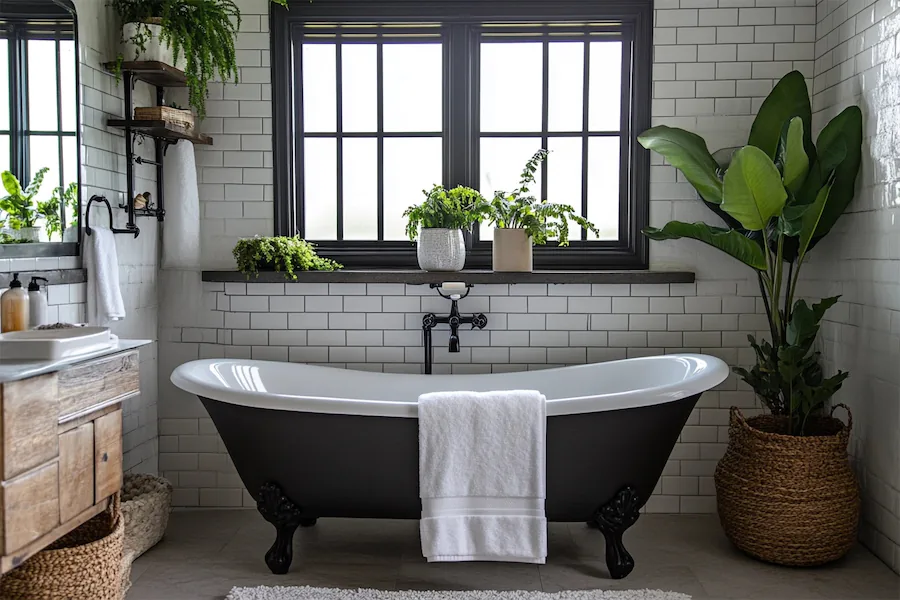Incorporating black accents into bathroom design introduces a sense of sophistication and modernity, creating a striking contrast that enhances the overall aesthetic. This article explores the concept of black-accented bathrooms, delving into their history, key features, applications, considerations, and concluding thoughts.
Introduction to Black-Accented Bathrooms
Black accents in bathrooms involve integrating elements such as fixtures, tiles, and accessories in black or dark tones. These accents provide depth and contrast, complementing various design styles from contemporary to traditional. The versatility of black allows it to be used in subtle details or as bold statements, enhancing the visual appeal of the space.
History and Origins of Black in Bathroom Design
Historically, black has been associated with elegance and luxury in interior design. In bathroom design, the use of black elements gained prominence in the late 20th century, aligning with modern and minimalist design trends. The adoption of black accents has continued to evolve, with contemporary designs embracing black for its ability to add drama and sophistication to the space.
Key Features of Black-Accented Bathrooms
- Contrast and Depth: Black accents create a striking contrast, adding depth and visual interest to the bathroom.
- Versatility: Black complements various design styles, including modern, industrial, and classic aesthetics.
- Timeless Elegance: The use of black introduces a timeless quality, contributing to a sophisticated and chic environment.
- Highlighting Features: Black accents can draw attention to specific areas or fixtures, serving as focal points within the design.
Applications of Black Accents in Bathrooms
- Fixtures: Incorporating black faucets, showerheads, and handles introduces a cohesive and modern metallic theme. Matte or glossy finishes can be selected to match the desired aesthetic.
- Tiles and Walls: Black tiles or painted walls can serve as feature walls or backsplashes, adding depth and a contemporary feel to the bathroom. Geometric patterns or textured finishes can enhance visual interest.
- Cabinetry and Vanities: Black cabinetry or vanities provide a bold statement, contrasting with lighter countertops or walls to create a balanced look.
- Accessories: Incorporating black through mirrors, towel racks, and decorative items allows for subtle integration of the color without overwhelming the space. These accents can tie together various elements of the design.
Considerations When Incorporating Black Accents
- Lighting: Adequate lighting is essential to prevent the space from appearing too dark. Natural light, complemented by well-placed artificial lighting, can balance the dark tones.
- Balance: Maintaining a balance between black accents and lighter elements ensures the space remains inviting and not overly stark. Pairing black with white or neutral tones can achieve this balance.
- Space Perception: In smaller bathrooms, excessive use of black can make the space feel confined. Strategic placement of black accents can add elegance without diminishing the sense of space.
- Maintenance: Black surfaces may show water spots and soap residue more prominently. Regular cleaning is necessary to maintain their appearance.
Conclusion
Black accents bring a timeless elegance and modernity to bathroom designs, bridging the gap between functionality and aesthetic appeal. Whether through fixtures, tiles, or accessories, black introduces a unique character that enhances the overall design. By thoughtfully selecting and balancing black elements, homeowners can create a bathroom space that is both luxurious and inviting.
